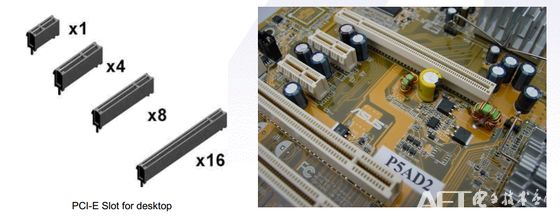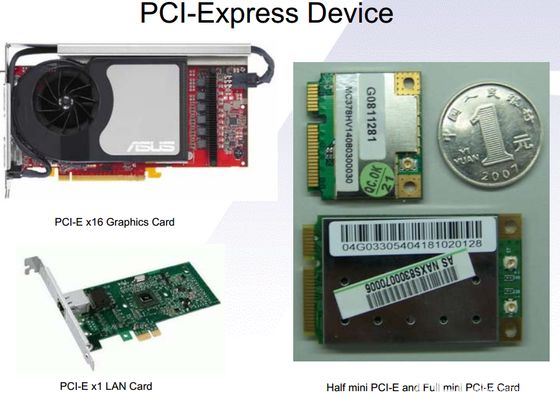PCI-Express is the third generation I/O bus after ISA and PCI bus, namely 3GIO. It was proposed by Intel at the IDF in 2001 and was renamed "PCI-Express" after being released by the PCI-SIG (PCI Special Interest Organization) certification. Its main advantage is the high data transmission rate, and also has the advantages of strong anti-interference ability, long transmission distance and low power consumption. Note: The first generation of buses generally refers to ISA, EISA, VESA, and Micro Platforms. The second generation bus generally refers to PCI, AGP, and PCI-X. In addition, CPCI and PXI, which are common in measuring devices such as oscilloscopes, are actually extensions of PCI in the field of instrumentation interfaces. PXI and PCI-X are two different buses. PCI-X is mainly used in server systems. Rarely used in PCs. The PCI-E transmission rate in the figure refers to RAW Data, and the actual effective transmission rate is 80% of the rate in the figure, because PCI-E (Gen1&Gen2, the new method used in Gen3, 128b/130b) is used. 8b/10b codec technology. The PCI-Express bus spec specifies that PCI-Express is abbreviated as PCIe, but in many cases, it is often abbreviated as PCI-E for convenience. The PCI-E interface differs depending on the bus width. A PCI Express connection can be configured for x1, x2, x4, x8, x12, x16 and x32 data bandwidth. (x2 and x12 link widths are optional) PCI-E various bit width devices can be used freely. For example, the x1 card can be inserted into the x8 slot, and the x8 card can be inserted into the x16 slot for use. Convenience. Some common PCI-E devices are shown below: Currently PCI-E has been updated to the fourth generation (ie PCI-E 4.0, Gen4), and soon Gen5 will also arrive: This serial will be based on PCI-Express Base Spec V2.0, combined with Mindshare's PCI Express System Architecture book and some blogs on the web and training courses of some companies. Since PCI-E is inherited from PCI/PCI-X, PCI-E is almost fully compatible with PCI/PCI-X devices at the application layer (software). At the hardware level, it can be docked with the PCI-E to PCI/PCI-X bridge. And PCI-E is a very complicated bus, so you must have a certain understanding of PCI and PCI-X bus in advance while learning PCIe. Middle-low Level Commercial Sky Curtain Middle-Low Level Commercial Sky Curtain,Outdoor Football Stadium Led Grille Screen,Transparent Led Grille Screen,Led Display Billboard Kindwin Technology (H.K.) Limited , https://www.szktlled.com



